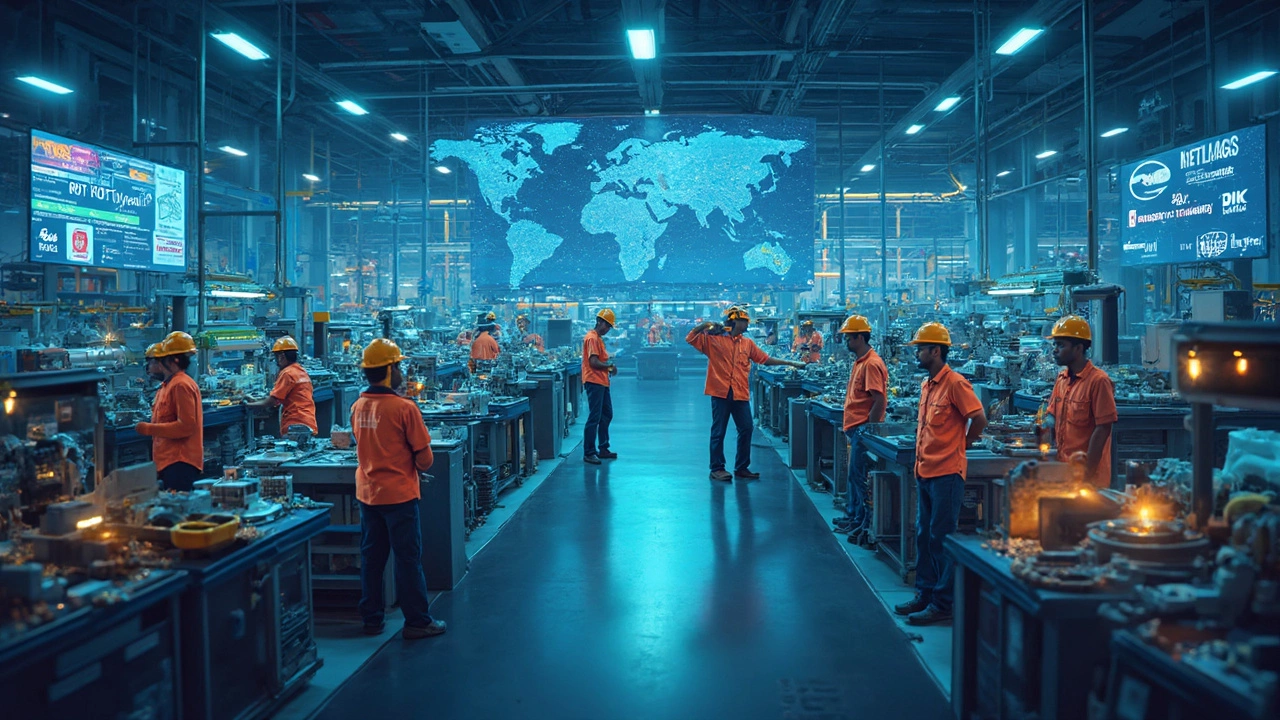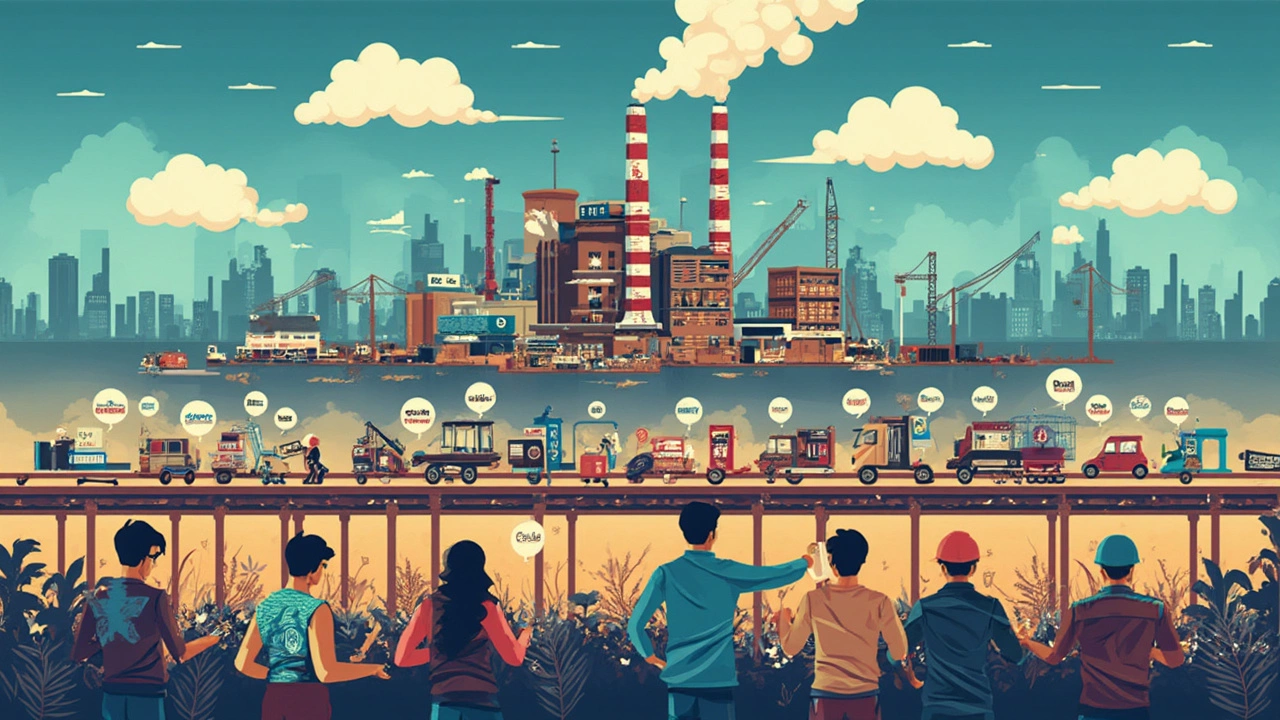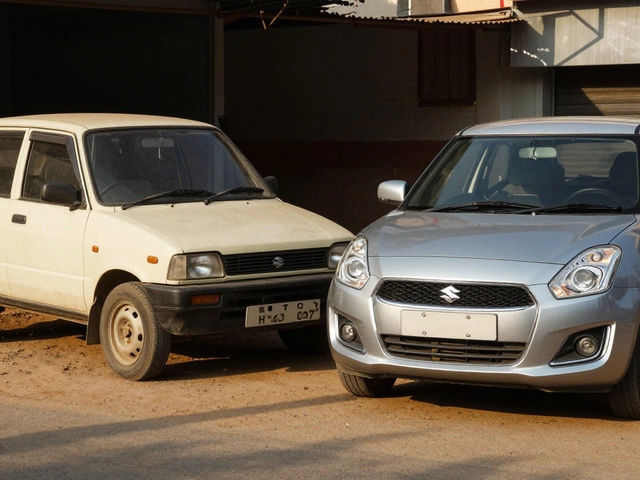Who is the Leading Manufacturer in the World? Top Manufacturing Companies Revealed

Try picturing a single company pumping out everything from smartphones to heavy trucks, with sales that can make most countries look broke by comparison. That’s the level we’re talking about when it comes to the world’s leading manufacturers right now—think companies like Toyota, Volkswagen, Apple, and Samsung playing in a league of their own.
The manufacturing world isn’t just about slapping things together in a factory. It’s high-stakes, fiercely competitive, and everyone’s scrambling to be number one. What’s wild is that the leader may change depending on whether you count sales, profit, number of employees, or straight-up brand influence. Want a tip? Never judge just by size—sometimes the most efficient player makes a bigger impact than the biggest in headcount.
The big names dominating the charts didn’t just get lucky—they’ve built flexible supply chains, invested in robots, adapted to wild market swings, and learned to knock out quality at insane volume. If you look closely, you’ll spot new giants sneaking into the rankings—especially Asian electronics and electric car firms, growing way faster than traditional manufacturers ever did.
- The Scale of Global Manufacturing
- Today's Biggest Players
- The Secret Sauce: What Makes a Leader
- Emerging Rivals to Watch
- Why It Matters for You
The Scale of Global Manufacturing
It’s hard to wrap your head around how massive the manufacturing sector is until you see the numbers. Global manufacturing drives almost $16 trillion in annual output. That’s more than the GDP of most countries, and the race to the top isn’t slowing down anytime soon.
Different regions have their own specialties. China, for example, cranks out almost 30% of the world’s manufactured goods. The U.S. and Germany are also at the front, but their strengths lie in things like cars, planes, and machinery. Meanwhile, Southeast Asia is turning into the new hotspot for electronics, especially as companies mix up their supply chains.
Here’s a look at how much the top players contribute to global output:
| Country | Share of Global Manufacturing Output (%) |
|---|---|
| China | 28.7 |
| United States | 16.8 |
| Japan | 7.2 |
| Germany | 5.7 |
| South Korea | 3.3 |
Some manufacturers go way beyond just producing products. They manage massive supply networks, ship millions of units daily, and set trends the whole world follows. The biggest factories sit together in clusters—like Guangdong in China or the Midwest in the U.S.—because having suppliers, talent, and logistics nearby makes things run smoothly.
If you really want to understand who is the leading manufacturer, it’s not just about size. It comes down to how fast they can adapt, how well they control costs, and how much value they deliver to customers across the globe. In manufacturing, staying at the top means constantly reinventing how things get made and delivered—no shortcuts allowed.
Today's Biggest Players
If you look at the top of the food chain in the manufacturing world, some names keep popping up. Toyota, Volkswagen, Samsung, and Apple are the real heavy hitters right now. Each of these companies is massive, but they tackle manufacturing in different ways and make totally different products.
Toyota keeps its spot as a titan. In 2024, it sold over 11 million vehicles, beating everyone else in the auto industry, and raked in more than $260 billion in revenue. Its Toyota Production System is famous for making things crazy efficient—other companies literally copy their methods.
Volkswagen, another auto giant, isn’t far behind. As of this year, it owns big brands like Audi, Porsche, and Lamborghini. In 2024, the group shipped out close to 9 million cars, and made about $280 billion in revenue. What’s interesting is that Volkswagen is all-in on electric vehicles, trying to make half of its sales electric in the next few years.
Now, jump over to tech, and you’ll see Apple dominating the landscape. Apple doesn’t own the factories—it relies on contract manufacturers like Foxconn—but its products, from iPhones to Macs, move at a wild scale. Apple’s annual revenue just hit $383 billion, and it pumps out more than 220 million iPhones every year. Even though it’s best known for sleek design, it’s innovation in supply chains and efficiency that lets Apple keep up with demand.
Samsung is another beast. It ships everything from phones to massive OLED screens and even semiconductors. In 2024, its manufacturing arm brought in over $200 billion in sales, and it employs more than 266,000 people. The company has managed to lead in chips—and those are the backbone of almost every piece of tech you own.
If you check the manufacturing rankings, these powerhouses stay on top because they’re always adapting, investing hard in technology, and pushing for global reach. That’s why their names pop up every time you talk about the leading manufacturer in the world.

The Secret Sauce: What Makes a Leader
When it comes to the leading manufacturer in the world, it’s not just about how many gadgets or cars a company pumps out. The top dogs in manufacturing nail a few key things, and it starts with efficiency. For example, Toyota’s famous “lean manufacturing” system slashed waste and boosted quality, making them a legend. Samsung invested early in advanced robotics, churning out millions of devices with fewer errors and lower costs than rivals.
Next up: global supply chains. Apple’s secret weapon isn’t just the iPhone itself—it’s having suppliers and partners across dozens of countries, keeping production fast and prices competitive. After the pandemic showed how fragile one-location setups could be, more leaders doubled down on geographic diversity and backup plans.
Then there’s constant innovation. Volkswagen’s massive shift to electric vehicles after Dieselgate wasn’t just quick thinking—it saved their reputation and put them back on top. In China, CATL has become the world’s top battery maker partly because they keep pouring billions into new tech, even hiring entire teams just to test future materials.
- Cutting-edge technology: Robotics, AI, and automation are mission critical. Factories loaded with sensors can track problems in real-time and fix them before things get messy.
- Scale and speed: Being able to crank out products by the millions, right when the market wants them, separates the pros from the rest.
- Employee know-how: Even with all the machines, you still need top engineers and designers. Tesla poached some of Apple’s best battery experts to get an edge.
Here’s a quick comparison of how some of these leaders stand out in numbers:
| Company | Annual Revenue (2024, USD) | Employees | Factory Locations |
|---|---|---|---|
| Toyota | $275 billion | 370,000 | 51 |
| Samsung Electronics | $245 billion | 266,000 | 43 |
| Apple (manufacturing partners) | $385 billion* | not disclosed | 200+ (via partners) |
| Volkswagen Group | $312 billion | 672,000 | 120 |
*Apple relies on partners like Foxconn and Pegatron for actual manufacturing so employee numbers are estimates.
If you look behind the headlines, the ones on top are always the fastest learners. They adapt to market shocks, move production when crises hit, and pour resources into whatever’s next—whether that’s electric cars, smarter factories, or brand-new materials nobody else is using yet.
Emerging Rivals to Watch
The global manufacturing scene isn’t just an old boys’ club of top dogs—we’re seeing fresh faces step up fast, especially from Asia. These emerging players are shaking things up with new tech, sheer production power, and the guts to challenge the so-called untouchables like Toyota and Apple.
Probably the biggest head-turner lately is BYD, the Chinese electric car company. In 2024, they sold over 3 million vehicles, outselling even Tesla when it comes to electric cars. And they're not just about cars—they crank out batteries and electronics too. Then there’s Foxconn, the massive Taiwanese firm known for building pretty much every iPhone out there. Besides Apple, they now assemble stuff for Microsoft, Sony, and even make electric vehicles for other brands.
Here’s a quick look at some rising stars making waves:
- BYD: Surpassed 3 million vehicle sales; world leader in EVs and batteries.
- Foxconn: Not just smartphones—they’re gearing up for electric cars, and just opened big factories in India and Mexico.
- Tata Group (India): Moving from steel and cars into high-tech, with Tata Motors grabbing spotlight for electric buses.
- Haier (China): Once a local appliance seller, now they own GE Appliances in the U.S. and sell all over Europe.
- SK Hynix (South Korea): Second-largest memory chipmaker, right after Samsung, feeding the AI and cloud mania.
Curious how the numbers stack up? Check out just a few 2024 stats showing who’s climbing the ladder:
| Company | Country | Key Product | 2024 Revenue (USD Billion) | Notable Fact |
|---|---|---|---|---|
| BYD | China | Electric Vehicles | ≈ $83 | Outsold Tesla in EV units worldwide |
| Foxconn | Taiwan | Electronics Manufacturing | ≈ $218 | Main assembler for Apple, expanding EV production |
| Tata Motors | India | Automobiles | ≈ $45 | Leads India's EV bus market |
| Haier | China | Home Appliances | ≈ $37 | Owns GE Appliances (US) |
| SK Hynix | South Korea | Memory Chips | ≈ $36 | Critical supplier for global AI hardware |
The big takeaway? The leading manufacturer title could look totally different in a few years. These firms are proving that new tech and global ambition can shake up centuries-old industry rankings. If you want to spot the next giant, keep an eye on battery makers, chip producers, and EV upstarts—they’re moving fast and rewriting the rulebook.

Why It Matters for You
You might not think twice about who tops the list of manufacturing companies, but the impact hits way closer to home than you’d guess. Who leads the pack often shapes what’s on store shelves, how cheap or expensive things are, and even if you can get that new phone or car without waiting months. It’s not just a boardroom thing—it touches your daily life, your job prospects, and even your safety.
Let’s get real: when a leading manufacturer changes its strategy, it sends ripples through the whole supply chain. If a company like Apple or Toyota tweaks its production, local suppliers scramble, jobs shift, and sometimes entire towns feel the pinch or the boom. The microchip shortage in 2021, for example, made it painfully clear just how intertwined everything is—a hiccup from a manufacturing giant can mean empty car lots around your block.
It also matters if you invest or run a business. When companies like Samsung or Volkswagen commit billions to new tech or greener factories, it tells you where the economy is headed. Chasing after the latest innovation isn’t just a race between businesses—it shapes the stuff we end up using and the price tags we see.
Check this table for a taste of how these manufacturers touch our wallets and choices:
| Company | Main Products | Global Employees | 2024 Revenue (USD) |
|---|---|---|---|
| Volkswagen Group | Cars, Trucks | 676,000 | $331 billion |
| Apple | Electronics, Phones | 161,000 | $394 billion |
| Toyota | Cars | 375,000 | $286 billion |
| Samsung Electronics | Electronics, Appliances | 266,000 | $240 billion |
Want an edge if you’re job hunting or planning a career switch? Most of these giants are always hiring, especially as they automate more and push sustainability. Learning a little about their supply chains, tech needs, or global moves can land you a better spot or help you ride the next big wave—whether that’s batteries, robotics, or even recycled materials.
The next time you grab your phone or jump in your car, remember—you’re holding the end result of a global manufacturing race. Paying attention to who’s actually winning might pay off more than you think.





